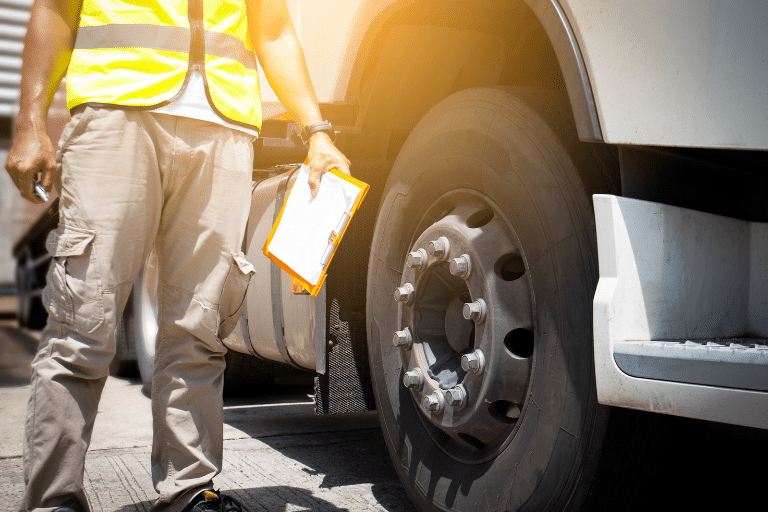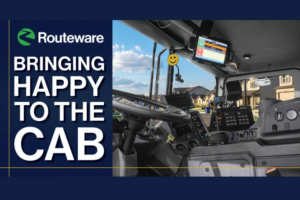Regulations require waste hauling fleet operators to create and maintain records relating to vehicle safety. Learn about how Routeware is making compliance with these DVIR regulations easier and more efficient, with numerous other benefits coming through digital technology.
Heavy-duty trucks are the backbone of a waste and recycling collection operation. To ensure the safety of both drivers and the public, all commercial fleets are subject to federal regulations that cover the inspection, repair, and maintenance of trucks.
Whether you are a municipality or private hauler, as a fleet operator, you need to ensure that your waste and recycling trucks are working correctly and safe to use. This is where Driver Vehicle Inspections Reports (DVIR) come in. While these were once performed manually, with pen and paper, the modern standard calls for electronic Driver Vehicle Inspection Reports, in the interest of both efficiency and record-keeping.
What federal regulations cover Driver Vehicle Inspection Reports (DVIR)?
In the US, trash and garbage trucks fall under the definition of commercial motor vehicles (having a gross vehicle weight or gross combination weight of 10,001 pounds or more) and are subject to the regulations governed by the Federal Motor Carrier Safety Administration (FMCSA) covering inspection, repair and maintenance and found in Title 49 CFR (Code of Federal Regulations) Part 396. The requirements are detailed specifically in part 396.11 and 396.13.
The regulations state that every motor carrier shall maintain the driver vehicle inspection report, the certification of repairs, and the certification of the driver’s review for three months from the date the written report was prepared. Further information can be found on the U.S. Dept. of Transportation’s Federal Motor Carrier Safety Administration’s (FMCSA) website at www.fmcsa.dot.gov.
In Canada, a daily pre-trip (Schedule 1) inspection is required, and drivers must carry an inspection schedule and the last inspection report. Where the driver identifies a minor issue, it must be reported to the fleet operator on the inspection report. Where a major issue is identified, the truck must be taken off the road for corrective maintenance.
What are the requirements for waste management DVIR?
The two key stages in the daily inspection routine are the post-trip and the pre-trip checks.
Waste Management DVIR – Post-Trip
At the end of each shift, the driver of each vehicle should perform a post-trip check and complete a Driver Vehicle Inspection Report (DVIR). This report lists any defects that would affect the safe operation of that truck. This outgoing driver should sign the DVIR. At a minimum, the report must cover the following parts and accessories:
- Service brakes including trailer brake connections
- Parking brake
- Steering mechanism
- Lighting devices and reflectors
- Tires
- Horn
- Windshield wipers
- Rear vision mirrors
- Coupling devices
- Wheels and rims
- Emergency equipment
If a driver identifies an issue during the inspection this must be recorded. Before the truck can be used again, the part must be repaired or replaced by the maintenance team. The inspection report should then be signed by the mechanic to verify that corrective action has been taken or to indicate that no action was necessary.
Waste Management DVIR – Pre-Trip
At the start of the next shift, the incoming driver is required to review the vehicle’s Driver Vehicle Inspection Report (DVIR) from the previous shift. If the DVIR does not list any defects, the driver will sign the report to confirm they have reviewed it. The driver can then move on to their own pre-trip inspection of the truck.
Where vehicle defects were identified on the DVIR, before undertaking their own pre-trip check, the driver must confirm that each defect has been repaired or corrected, or that no repair was necessary, which will be indicated by the mechanic’s signature.
Why use Integrated Digital Driver Vehicle Inspection Reports (DVIR) in Waste Hauling?
Many haulers still have paper DVIR forms and processes, while others have switched to an electronic drive vehicle inspection report system with handheld devices. Smart haulers, however, should be looking to implement an electronic DVIR solution as part of their on-board computing platform.
An integrated, digital DVIR solution offers some key advantages for haulers:
Easier for drivers
Digital DVIR makes it quicker and easier for drivers to conduct inspections and quicker and easier for you to access reports if you need. Drivers soon get used to what they need to do, and getting rid of paperwork lets them get on with their day faster.
More careful inspections
Integrated DVIR systems make it much harder for drivers to ‘pencil-whip’ forms and force drivers to take time to check their truck carefully. And because they are linked to your other vehicle systems, workflows can allow a vehicle to be locked out if an open safety defect remains.
Consolidated safety information
By having electronic DVIR as part of their existing on-board computing platform, waste and recycling operators can consolidate vehicle safety information with other safety systems, such as truck cameras and vehicle telematics.
Less hardware
With DVIR integrated into your on-board tablets there’s no need to ask drivers to carry a smartphone and no need for them to download an additional app. Fewer devices means fewer distractions, and one less headache for your IT team to manage.
Flexible to change
One of the key issues with paper forms or stand-alone DVIR systems comes when something needs to change. Perhaps a new vehicle type or additional check you want to put in place. With paper forms that means printing and reissuing new forms to everyone, with standalone systems it’s an IT integration project. Much better to have DVIR as part of your on-board system already, so that changes are quick and easy to make.
That’s the end of our article today. Want to learn more about waste hauling software or your specific pain points? Let’s talk.





